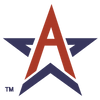
It doesn't matter if you have an indoor court with nice indoor benches or an outdoor court with Douglas brand nets, maintenance is necessary for keeping a professional and tidy tennis court. Though there are some differences between court maintenance, especially with a Har-Tru Clay court, most principles remain the same. Time to clean up the old net strap, redo the line tape or get some hopper carts to pick up loose tennis balls - summer is almost here and it's time to keep those tennis courts in tip top shape.
General Maintenance Tips
For indoor courts with nice indoor benches maintenance can be a bit more routine. There is no harsh weather or potential weed growth that happens in indoor courts. Hard courts are most common for indoors. Many indoor hard courts are made with concrete or asphalt as a base, with a synthetic finish to color the court and give it a little grip. One of the huge advantages of these types of courts is they allow easy installation of indoor benches to give players a place to sit and rest or coaches a place to watch and instruct from.
Maintenance for indoor courts is pretty general. Standard maintenance will, of course, start with keeping tennis courts clean. Start by picking up tennis balls and removing other tennis gear left behind. Once the court is clear, remove the net as well. After the net is removed, use a strong power washer to carefully spray the court surface and clear it off all scuff marks and stains. This will help maintain a professional appearance and keep the courts in good condition for longer periods of time.
Periodically a tennis court will need to be resurfaced. The cost for resurfacing a court is high. Because of this, tennis club managers should have a good routine for cleaning and maintaining tennis courts to prolong the life of each court.
One way to maximize the value of your next resurface is to consider including lines for pickle ball. Pickle ball courts can fit easily inside of a tennis court, and the USAPA is tracking over 200,000 pickleball players and 12,668 pickle ball courts in North America. Pickleball is growing hugely in popularity.
Tennis Court Surface Cleaning Mixture
A great mixture for a surface cleaner for indoor tennis courts (that won't damage any paint on your indoor benches) is 2 parts household bleach, mixed with 1 part water. This mixture should only be used to take care of molds and fungus growth, or other hard stains. Most surface cleaning can be done with just water and a power washer.
Some say that the best defense is a good offense, and while that may be true for sports, it isn't always the case for court maintenance. Keeping some general rules about what is and is not allowed on the courts can make a huge difference in keeping courts clean and giving your court manager a headache. Here are some general recommendations for what NOT to allow on your courts:- Use only non-marking tennis shoes on the court surface
- No bikes
- No roller blades
- No skateboards
- The only exception to these three is if you are using a SkateMaster Surfacing System
- No chewing gum, food, or drinks (other than water). Sticky sports drinks can be a pain to clean up, chewing gum even more so.
- No dragging chairs, benches, or other items on the surface of the courts. There is a reason you want to have indoor benches installed, and typically those indoor benches should be anchored to the courts. This gives players a place to sit and encourages them to leave their own chairs at home, which will help prevent scuff marks and scratches, protecting the surface of your courts.
Tennis is the sport for a lifetime. Because tennis has such a wide user base, aging from as young as 4 and 5 years old to players well into their golden years, it is important to cater to as many demographics as possible. Tennis is also a sport that is defined by high sportsmanship and considerate players. Ask the members of your team or tennis club to help keep the courts nice so that everyone can enjoy playing on them.
